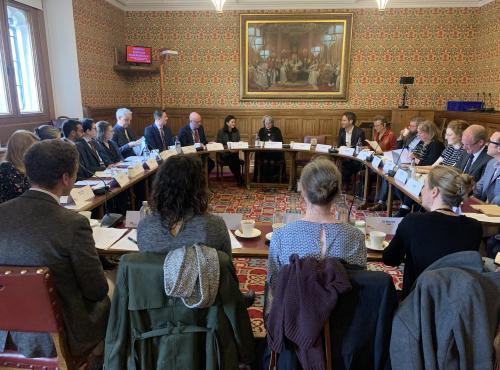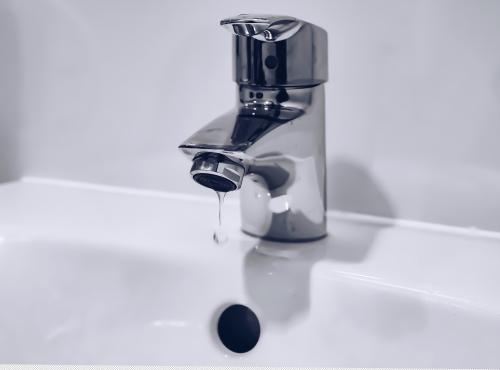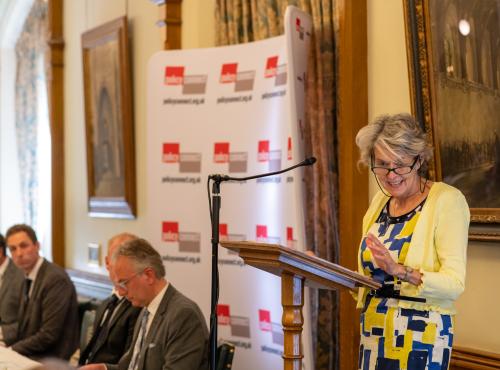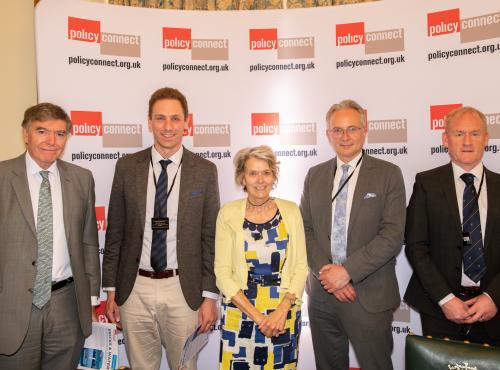1997 - Prescott pumps the water sector: what progress have we made?
Much like now, from 1995 to 1998 parts of the UK were suffering from drought conditions due to a series of summer heatwaves and dry winters. On 19 May 1997, the then-Deputy Prime Minister John Prescott convened an emergency ‘Water Summit’ in London. Other than giving the attending water companies a general dressing down, Prescott wanted to refocus the minds of the water industry on improving practices and services for their customers.
Four new Prime Ministers, governments and elections later, water is back on the political agenda this year, with the Labour Party pledging to renationalise the water industry (no such focus is present in any other manifesto from their rival parties). Twenty years on, John Prescott has moved to the House of Lords, and we take a look at what progress has been made on the challenges facing the water industry.
"The conference is being seen as a signal of the new Government's determination to tackle the growing problem of falling water supplies after the two lowest rainfall years since records began." BBC News
Private water companies in the market
The ten publicly-owned regional water authorities were privatised in 1989 under the government of Margaret Thatcher. The economic regulator of the new privatised industry, Ofwat, was created to help to set water tariffs and to scrutinise business plans. By 1997, with a new government in place, there were a total of 29 water companies on the receiving end of Prescott’s conference tirade.
Today, there are 10 water and sewerage providers in the UK. Only Scottish Water and Northern Ireland Water remain in the public sector. There are a further 14 water-only companies, although many of these are now owned by some of the larger providers and their holding companies. This compares to the approximately 2,400 localised water providers that existed in 1945, showing just how the industry has developed from multiple localised suppliers to become several large-scale mergers.
This shows that there has been some consolidation in the industry, but not as you much as you might have expected in a free market. Each company still has its own set boundaries for provision, and several micro-providers still operate next to the goliaths of the industry: Cholderton and District Water for instance, which provides water to just 2,000 people.
Executive pay
Mr Prescott started his speech in 1997 by telling the audience of senior water executives that he did not wish to make, ''the usual comments about fat-cat salaries''. But he went on to say that people saw an industry, ''whose directors look after themselves rather than their customers.'' No pulling of punches from Prescott there, then.
Excessive executive pay is still a concern in the industry however, with several politicians voicing concerns about boardroom pay in the sector, as well as concerns over profiteering and tax avoidance. As the regulator Ofwat prepares for PR19, it will be looking closely at the performance of the privatised water industry, and what value for money it is delivering for customers.
The water sector would say that it has moved on a lot since then. Water company business plans are scrutinised by Ofwat and are the surveyed for the agreement of customers, where companies are marked down in price reviews for providing poor customer service. Ofwat tries to ensure that customers receive a high quality service from their water company, at an acceptable price.
Repairing leaks
Water lost through pipe leakage hit an all-time high in 1994-1995, especially shocking in light of the drought conditions the UK had been suffering from at that time. This also coincided with that last genuine drought in the UK since the great drought of 1976, when parched Yorkshire reservoirs meant that water had to be trucked in at huge expense (£3m per week) from East Yorkshire, affecting 600,000 customers.
In 1997, John Prescott highlighted the problem of water lost in the system due to leaking pipes, and stated that “[A] water company should offer to locate and repair leaks in their customers' supply pipes free of charge.”
Reducing water loss through leakage is often high on a water customer’s list of priorities. Everyone wants to reduce the wastage of high quality treated drinking water to the soil. However, whilst burst water mains are reported and fixed promptly by companies, small underground leaks that aren’t easily noticed are far more difficult to locate and fix. There is also the problem of access: many water pipes run under roads, and digging up the road to repair them would cause significant disruption to road users.
There is a balance to be found, and this is what the regulator Ofwat calls the ‘Economic Level of Leakage’. This is the level of leakage that a water company is ‘allowed’ by the regulator in its business plan, as it would be costly and disruptive to go beyond this level. For instance, the reason why Thames Water has the worst leakage rates is because many of its pipes are underneath London, and the cost and disruption needed to repair them would be significant.
Lord Prescott will be moderately pleased with the progress in this area: although customer-side leaks are still the customer’s responsibility to fix, the majority of water companies provide free leak detection for non-household customers and some also offer these customers a free repair. Overall leakage has been reduced significantly since the Water Summit.
However, customer-side leakage is likely to still be extensive, with 4.2% of properties having leaks. Although overall water leakage is hard to calculate, it is thought to have been reduced by a third since the mid-1990s. After the ’97 Water Summit, water companies were set the target of reaching ‘economic leakage’ within five years. At present, it is likely that approximately 3.3 billion litres of water, the volume of over 1,300 Olympic-sized swimming pools, are lost everyday in the UK due to water pipe leakage.
Metering
At the ‘97 Water Summit, there were indications that the Labour Government was softening its opposition to water metering. Environment Minister, the late Michael Meacher, said that they were: “certainly prepared to consider selective metering”.
The installation of compulsory water meters is still a contentious issue with customers and politicians, even in these times of (relative) water shortage. Approximately half of people in England and Wales now live in a property with a water meter, but a significant proportion (63%) of these will be located in the water-stressed South East of England.
The government that Prescott had been part of in 1997 had been against it. Whilst water metering is a sure way to reduce water demand, and is surely the fairest way to pay for water usage, there are concerns over customers’ ability to pay. Some affordability campaigners such as Frank Field MP continue to warn against water metering, feeling that if people are worse off with a meter then they should be able to go back to the old (and I do mean old, last updated in 1990) rateable value system, which is based on the then value of the property. Provisions must be made to ensure vulnerable customers, those that have a condition that requires a lot of water usage, or those struggling to pay their water bill, are protected from further water metering rollout. Whilst water companies cannot interrupt service to non-paying customers, it can damage their credit rating.
Whilst all water customers can request for a water meter to be installed, it then cannot be removed. Eventually, there will be universal metering in the UK, as there has been in Europe for many years. Southern Water completed its universal metering programme in 2015, installing 450,000 water meters, with an overall reduction in water bills and saving an estimated 27 million litres of water per day. There have been informal discussions in the sector about rolling out metering more widely in the near future.
The Future
What challenges will the water sector face in the next twenty years? Predicting and managing the effects of climate change on weather patterns is sure to be high up the agenda. Underground aquifers are beginning to run low, so there may be a need for less water abstraction from the environment. Population growth bringing greater water demand, particularly in the dry South East of England, is a near certainty.
Plenty to ponder then, for water executives and policy wonks alike. Policy Connect will be investigating the future of water and housing policy in the UK, in a new in depth research inquiry. Contact WSBF Manager jim.clark [at] policyconnect.org.uk (subject: Water%20and%20Housing%20Inquiry) (Jim Clark) to register your interest.



